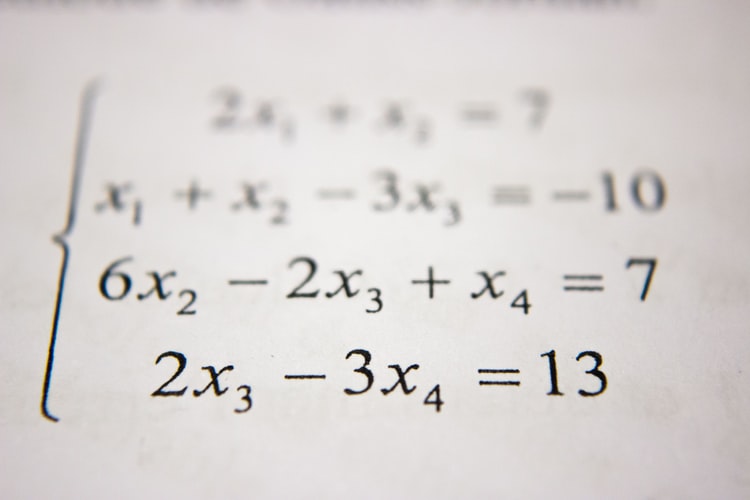Math problems are a real problem for many students. Some of them are struggling to pass their tests and exams, and some are facing difficulties in developing their math skills. Even after preparing hard for your maths exam, you may not be able to solve all the problems in the exam paper. That could be because you were just not fast enough to solve the math problems in the designated exam time.
In other circumstances, many students are intimidated when they forget to bring calculators. It’s not a surprise that calculators save a lot of time. But, there are exams where calculators are prohibited. So, you must know a few techniques to solve problems faster.
In case you are going for high-end mathematical operations like finding ratios, factoring polynomials, and calculating derivatives, then you should use a quality graphing calculator. You will find excellent calculators on this site. Choose the best graphing calculators for easy and time-efficient problem-solving.
Besides calculator uses, every student should know some basic tricks to solve math problems faster. Let’s find more about these techniques.
Addition and Subtraction

Though addition and subtraction look easy, many of us get confused without calculators to help us. We can follow some easy and simple tricks to get it right.
1. Two-Step Addition
Students often face difficulties in adding integers above two digits. In such cases, add a number that makes it easy and then add the rest. For example, a student needs to make a sum of 493 and 87.
You can add 7 to 493 to make it 500 and then subtract 7 from 87. Now add 500 and 80. That is 580.
- Simple Process
493+87
=(493+7)+ (87-7)
=500+80
=580
2. Two-Step Subtraction
This is a similar method to the two-step addition, but this time it is subtraction. Remove numbers to make it east for the first one. Then remove a similar number from the second one. Now, subtract in a quick time.
For example, you are making a difference between 663 and 165. Remove 63 from 663 to make it 600. Do the same with 165 to make it 102. Now it is an easy subtraction of 600 and 102. That is 498.
- Simple Process
663-165
=(663-63)-(165-63)
=600-102
=498
3. Subtracting From Thousand

This is the easiest of all methods. To subtract it from 1000, subtract the numbers first two digits from nine. Now, subtract the final one from ten. Let’s say you are subtracting 539 from 1000.
Subtract 5 from 9. That is 4. Do the same for 3. So, 9 minus 3 is 6. Now, subtract the final number 9 from 10. That is 1. So, the answer is 461. You can also apply this to 10,000, 100,000, or other integers with this pattern.
- Simple Process
1000-539
9-5=4
9-3=6
10-9=1
=461
- Multiplication and Division
This is the most vulnerable area for math students. Some of them spend hours without the help of calculators. Let’s find some easy tricks.
4. Multiply with the power of 2
The power of 2 simplifies the multiplication process. It is the result of exponential with number 2 at the base. That means 2,4,8,16,32, and so on are the power of 2. If someone says 9 multiply with 8. That is equal to 9 multiply with 2 power 3.
- How does that help?
9x 2^3
18x 2^2
36x 2
72
So, it is a simple method to multiply the numbers in fragments.
5. Double and Halve
If you are multiplying with an even number, then multiply with half of the original number. You can repeat the process until you have an even digit to multiply. For example, you are multiplying 15x 24.
Here is how you can calculate that simply:
15x 24
30x 12
60×6
120×3
=360
6. Multiply even Numbers by 5

Choose a number that is a multiple of 5 and even. Let’s say 40. That is 5 times 8. Now divide the multiples of five to half. So, half of 8 is 4. Now add zero to this number. That is 40.
7. Multiply Odd Numbers by 5
What can we do for odd numbers? Multiply 5 with an odd number. Let’s say 5 times 9. Now subtract one from this even number. That is 9 minus 1. Now halve this newly formed even number. That means half of eight, which is 4. Now add five to the right of this number. That means 45.
8. Multiply with 9

Multiplying a number with 10 is so easy. But, multiply with 9 confuses a bit. Round up 9 to 10 and then multiply. Let’s say you are multiplying 13 times 9. Now, round up 9 and multiply 13x 10. That is simple, 130. Now, subtract that first number from the result. That is 130-13= 117.
9. Square Two-Digit Number That Ends with One
Squaring two-digit numbers can take too long. But, it can be short to calculate if there is one in the end. Let’s say we are calculating 81 squares.
First, subtract one from 81 to make it 80. Now, multiply 80x 80; that is 6400. Now add 80 twice to this multiplication. It makes 6400+80+80=6560. Finally, add one. That makes 6561, which is exactly the result of 81 squares.
10. Calculate the Percentage
What is the easiest way to calculate a percentage? A common question for many math problems. Let’s say you want to know 44% of 120. Then multiply 44 with 120. That is 5280. Now, put a decimal two digits from the left. So, the answer is 52.80.
11. Balance Average

Finding average is no big deal if you follow some simple steps. If a worker works 12 hours on average for 4 weeks. Then, how can you balance the average in case he worked 12,14 and 14 hours in the first three weeks?
For the first week, 12-12=0; the second week, 14-12=2; Third week, 14-12=2. So, 0+2+2=4 additional hours. If the worker works 12-4=8 hours in the last week, then it will balance out to an average of 12 hours a week.
12. Know the Buzzwords
Students often get puzzled because of some buzzwords. Let’s identify a few common buzzwords for clarification.
- Addition: Sum, a total of, increased by, combined, more than.
- Subtraction: Difference of, less than, fewer than, reduced by.
- Multiplication: The product of times.
- Division: the ratio of, out of, the quotient of, per.
Good techniques not only help you to solve math problems faster, but it also builds your confidence level in your math abilities. You feel more empowered to become an efficient problem solver. Try the above-listed tricks. It will help you to get over the universal hurdle of math.
 Hi Boox Popular Magazine 2024
Hi Boox Popular Magazine 2024



